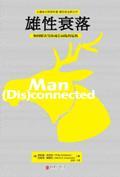为什么孩子们需要结婚了的父母和父亲的陪伴
菲利普·津巴多(Philip Zimbardo)
尼基塔·库隆布(Nikita Coulombe)
美国不再是“机会之地”了。对于许多正在长大的孩子们来说,好生活早已离他们越来越远;如果他们可以上完高中、找个稳定的工作、结婚、逃离身边的贫困,那就已经是万幸了。
从长期研究中我们知道,孩子的未来和向上层社会流动的可能性取决于他们在工作之前所生活的环境【1】。影响他们机会的最大因素在于有一个稳定和充满爱意的家庭,有结了婚的父母以及父亲的陪伴。没有这些,他们在各方面都会受到阻碍:
身体健康。与生活在完整婚姻家庭中的孩子们相比,生活在单亲同居家庭(即父母中的一方跟自己的男友或者女友住在一起)的孩子们更有可能出现身体健康相关的问题【2】,并且其遭受身体、情绪或者性虐待的可能性高出三倍之多【3】。研究婚姻问题数十年的约翰·戈特曼(JohnGottman)分析了离婚和不幸福婚姻中双方的血液样本,结果发现婚姻不幸福的人的免疫系统会受到抑制,他们的孩子们体内的应激激素水平更高【4】。
精神健康。单亲妈妈养育的孩子更有可能服用治疗注意力缺陷多动障碍的药物【5】,并且更有可能需要专业的情绪或者行为问题的治疗【6】。那些在双亲婚姻家庭中长大的孩子在成年后存在心理问题的可能性更小(对女儿来说尤其如此)【7】。
贫困。双亲婚姻家庭中的孩子们生活在贫困之中的可能性要远小于单亲家庭【8】,并且未来社会地位有所提高的可能性更大。一份估计提出,如果美国双亲婚姻家庭的比例还停留在1980年的水平的话,有孩子的家庭的收入要比现在高出44%【9】。
青少年怀孕和犯罪。单亲妈妈的女儿们更有可能过早接触性行为并且成为少女妈妈【10】,而这种情形下她们更可能依赖福利救济生活,并且她们的孩子不太可能跟自己的父亲生活在一起。大多数被收容的人都是在没有父亲的家庭中长大的【11】。
毒品和酒精。单亲家庭的孩子们吸食毒品的概率要高得多【12】。每周全家聚餐少于三次的家庭中,孩子抽烟的可能性增加了四倍,酗酒的可能性高出两倍多,抽大麻的可能性增加了两倍半,而且在未来继续使用毒品的可能性也增加了将近四倍【13】。
学校。来自双亲婚姻家庭的孩子们更少出现学习障碍【14】,而且他们在很多领域得分更高,包括了阅读【15】、口语和问题解决【16】、9个学业测试中的8个【17】,以及27个社交能力测量中的21个【18】。
未来收入。哈佛大学格兰特研究追踪数百名男性长达75年,该研究发现,有着温暖童年的男性——那些跟自己的父母(保持婚姻关系)和至少一个兄弟姐妹有着亲近关系的男性,跟在单亲家庭或者矛盾纷争的家庭里长大的同龄人相比,收入要高出50%【20】。
所有人都想让自己的孩子有比自己更好的生活,而教育就是个中关键。理解待在学校里的价值和去上大学的价值都是建立在父爱的基础上的。跟无条件爱孩子的母亲不同,父亲通常是给孩子划定边界的人。他们给孩子逐渐灌输自律性,并向他们展现延迟满足和坚持完成任务的重要性。孩子们需要来自父母双方的抚养,而只有父母双方都在场才能提供这样的爱。
美国的父亲缺失情况在工业世界中处于领先地位【21】。41%的美国孩子是由未婚妈妈生下的【22】。30岁以下的女性未婚生子率更是达到53%【23】。在美国,有三分之一的孩子正在没有父亲的家庭中成长【24】。即使是有已婚父母的孩子,也没有多少时间与父亲待在一起——学龄儿童平均每周只有半个小时与父亲有一对一的交流,而他们看电视玩电脑的时间却高达44小时【25】。在低收入社区中,这些趋势甚至更为极端。
没有如何作男人的例子,男孩们是学不到如何成为负责的父亲或公民的。现今的男孩们比他们父亲的教育程度还要低【26】。每五个大学生中只有两个是男生【27】,而有大学学位的人的工资从20世纪60年代至今只减少了12%,没有高中学历的人的工资则下降了66%(经过通货膨胀调整后的结果)【28】。
这些问题的核心在于爱和信任的破碎,而这破碎过程从童年的家中就开始了。温暖或阴冷的环境对男孩的影响非常深远,不仅针对他个人,也针对他之后成为什么样的丈夫和父亲。研究表明,不论种族还是经济背景,代间交流对男人的影响都特别强烈【29】。
乔治·瓦利恩特(George Vaillant)负责哈佛大学格兰特研究长达40年。他指出最幸福独立的男人来自于爱意满满的家庭:“他们(在儿时成长的过程中)学到了人生是值得信赖的,这让他们有勇气尝试和面对一切。”与之相反,“对他人缺乏信赖和希望使得一个人在孤独面前极度脆弱。”【30】
美国父权行动协会(National Fatherhood Initiative)进行的一项调查显示,在已婚或者同孩子父亲一起生活的母亲中,有56%认为孩子的父亲跟孩子有着“非常亲密和温暖”的关系,但是没和孩子父亲生活在一起的妈妈之中只有15%会这样说;与之相反,仅仅有3%已婚或者和孩子父亲同居的母亲报告父亲跟孩子有着“疏远和冷漠”的关系,而不和孩子父亲一起生活的妈妈们有47%这么说【31】。随着没有父亲的状况不断攀升,能在温暖的庇护下成长的孩子会越来越少,而更多的孩子们会经历上述的负面影响。
作为社会和个人,我们要怎么做才能让孩子们有更多成功的机会呢?我们需要制定更多鼓励家庭生活的政策:美国在西方国家中特立独行,没有法定的带薪产假和陪产假,儿童保险的价格也高得离谱【32】。这就让女性被迫在工作和家庭中做出选择,而男性除了工作或是完全离开家庭以外没有任何选择。在个人层面上,我们则需要更擅长去爱人。让这些正面趋势和两代间的正性循环不断继续的,是爱。男人最重要的事是爱妻子,反之亦然;而最成功和最健康的关系正是建立在互相照料之上的【33】。我们应该认识到,并不是“妻子快乐,生活快乐”(happywife,happylife),而是有爱的婚姻让我们拥有幸福、健康和有动力的孩子们,从而建立更好的社区,带来更多机会以及更多平等。
注释:
1Chetty, R, Hendren, N, Kline, P, &Saez, E (2014). “Where is the Land of Opportunity? The Geography of Intergenerational Mobility in the U.S.”Retrieved from Equality of Opportunity: http://www.equality-of-opportunity.org/files/Geography%20Executive%20Summary%20and%20Memo%20January%202014.pdf.
2Blackwell, D.L. (2007), “Family structure and children’s health in the United States: Findings from the National Health Interview Survey, 2001–2007.” National Center for Health Statistics.Vital Health Stat 10(246), 1.
3Wilcox, W.B. (2011), “A Shaky Foundation for Families.”Retrieved from the New York Times: http://www.nytimes.com/roomfordebate/2011/08/30/shotgun-weddings-vs-cohabitating- parents/cohabitation-is-a-shaky-foundation.
4Gottman, J.M., and Silver, N (2000), The Seven Principles for Making Marriage Work: A Practical Guide from the Country’s Foremost Relationship Expert. New York, NY: Harmony, 5-6.
5Hjern, A, Weitoft, G.R., and Lindblad, F (2010). “Social Adversity Predicts ADHD-Medication in School Children – A National Cohort Study.” Retrieved from ActaPaediatrica: http://onlinelibrary.wiley.com/doi/10.1111/j.1651- 2227.2009.01638.x/pdf.
6Dawson, D.A. (1991), Family Structure and Children’s Health: United States, 1988.Retrieved from US Department of Health and Human Services, Centers for Disease Control and Prevention, National Center for Health Statistics: http:// www.cdc.gov/nchs/data/series/sr_10/sr10_178.pdf, Table 13.
7 Fogarty, K and Evans, G (2009), “The Hidden Benefits of Being an Involved Father.”Retrieved from University of Florida IFAS Extension: http://www.cfuf.org/Filestream.aspx?FileID=14, 3.
8Blackwell, D.L. (2007), “Family structure and children’s health in the United States: Findings from the National Health Interview Survey, 2001–2007.” National Center for Health Statistics.Vital Health Stat 10(246). 7.
9Habeeb, L & Leven, M (2015).Why Won’t Liberals Talk about the Most Important Kind of ‘Privilege’ in America? Retrieved July 1, 2015, from National Review: http://www.nationalreview.com/article/415799/why-wont-liberals-talk-about-most-important-kind-privilege-america-lee-habeeb-mike.
10Ellis B.J., et al (2003). Does Father Absence Place Daughters at Special Risk for Early Sexual Activity and Teenage Pregnancy? Child Development.74(3), 801-821.
11Hymowitz, K (2012).The Real, Complex Connection Between Single-Parent Families and Crime. Retrieved from The Atlantic: http://www.theatlantic.com/sexes/archive/2012/12/the-real-complex-connection-between-single-parent-families-and-crime/265860/.
12Hoffmann, J.P. (2002),“The Community Context of Family Structure and Adolescent Drug Use.” Journal of Marriage and Family 64(2), 314-330.
13The Importance of Family Dinners VII (2011). Retrieved from the National Center on Addiction and Substance Abuse at Columbia University: http://www. casacolumbia.org/upload/2011/2011922familydinnersVII.pdf, Figure 1.A., 2.A.
14Blackwell, D.L. (2007), “Family structure and children’s health in the United States: Findings from the National Health Interview Survey, 2001–2007.” National Center for Health Statistics.Vital Health Stat 10(246), 1.
15OECD (2011). “How do students from single-parent families perform in reading?” Retrieved from OECD Publishing: http://dx.doi.org/10.1787/9789264095250-22-en.
16Ladd, L (2000).What Fathers Contribute to Child Development.Retrieved from Texas A&M AgriLife Extension: http://fcs.tamu.edu/families/parenting/fathering/fathering_pdf/development.pdf.
17Guidubaldi, J (1987), “Growing Up in a Divorced Family: Initial and Long Term Perspectives on Children’s Adjustment,” Applied Social Psychology, 230, 7.
18Guidubaldi, J (1987), “Growing Up in a Divorced Family: Initial and Long Term Perspectives on Children’s Adjustment,” Applied Social Psychology, 230, 7.
19MichaelE.Lamb,K.J.Sternberg,andR.A.Thompson.“TheEffectsofDivorceandCustody ArrangementsonChildren’sBehavior,Development,andAdjustment.”FamilyandConciliation CourtsReview,35,393–404,1997.Ascitedin“CustodyandParentingTime:LinkstoFamily RelationshipsandWell-beingAfterDivorce,”WilliamV.Fabricius,SanfordL.Braver,Priscila DiazandClorindaSchenck.InMichaelE.Lamb(ed.),TheRoleoftheFatherinChild Development(5thEdition).Hoboken,NJ:JohnWiley&Sons,2010.
20Vaillant, G (2012). Triumphs of Experience: The Men of the Harvard Grant Study. Cambridge, MA: Belknap Press, 113.
21Stern, P (Director) (2006), Raising Cain: Boys in Focus [documentary]. United States: PBS Films.
22Martin, J.A., Hamilton, B.E., Osterman, M.J., Curtin, S.C., and Mathews, T.J. (2013), Births: Final Data for 2012. Retrieved May 19, 2014, from National Vital Statistics Reports, Centers for Disease Control and Prevention: http://www.cdc.gov/nchs/data/nvsr/nvsr62/ nvsr62_09.pdf#table02.
23 美国30岁以下女性生育率为——黑人:73%;西班牙裔:53%;白人:29%。详见:DeParle, J and Tavernise, S (2012), “For Women Under 30, Most Births Occur Outside Marriage.” Retrieved from the New York Times: http://www.nytimes.com/2012/02/18/ us/for-women-under-30-most-births-occur-outside-marriage.html.
24MichaelE.Lamb,K.J.Sternberg,andR.A.Thompson.“TheEffectsofDivorceandCustody ArrangementsonChildren’sBehavior,Development,andAdjustment.”FamilyandConciliation CourtsReview,35,393–404,1997.Ascitedin“CustodyandParentingTime:LinkstoFamily RelationshipsandWell-beingAfterDivorce,”WilliamV.Fabricius,SanfordL.Braver,Priscila DiazandClorindaSchenck.InMichaelE.Lamb(ed.),TheRoleoftheFatherinChild Development(5thEdition).Hoboken,NJ:JohnWiley&Sons,2010.
25 As stated by David Walsh, founder of Mind Positive Parenting. Borden, C and Obsatz, K (Directors) (2007), Journeyman [documentary].United States, MirrorMan Films.
26 Quoting Warren Farrell (see his book, The Myth of Male Power, for more).Cribb, R (2011), “The Grim Evidence That Men Have Fallen Behind Women.” Retrieved from Toronto Star: http://www.thestar.com/life/2011/11/25/rob_cribb_the_grim_evidence_that_men_have_fallen_behind_women.html.
27Hussar, W.J. and Bailey, T.M. (2013), Projections of Education Statistics to 2021 (NCES 2013-008) Retrieved from National Center For Education Statistics, Institute of Education Sciences, US Department of Education: http://nces.ed.gov/ pubs2013/2013008.pdf, 75-77.
28Greenstone, M and Looney, A (2011), Trends. Retrieved from The Milken Institute: http://www.milkeninstitute.org/ publications/review/2011_7/08-16MR51.pdf, 11-13.
29The Effects of Marriage on Health. (2007). Retrieved from U.S. Department of Health and Human Services. Office of the Assistant Secretary for Planning and Evaluation: http://aspe.hhs.gov/hsp/07/marriageonhealth/rb.htm.
30Vaillant, G (2012).Triumphs of Experience: The Men of the Harvard Grant Study. Cambridge, MA: Belknap Press, 118-119.
31Glenn, N and Whitehead, B.D. (2009).MAMA SAYS: A National Survey of Mothers’ Attitudes on Fathering. Retrieved from National Fatherhood Institute: http://www.fatherhood.org/ mama-says-survey.
32The return of the stay-at-home mother. (2014). Retrieved from The Economist: http://www.economist.com/news/united-states/21600998-after-falling-years-proportion-mums-who-stay-home-rising-return.
33Weiner-Davis, M (2014).The Sex-Starved Marriage.Retrieved from TEDx: http://tedxtalks.ted.com/video/The-Sex-Starved-Marriage-Michele.

